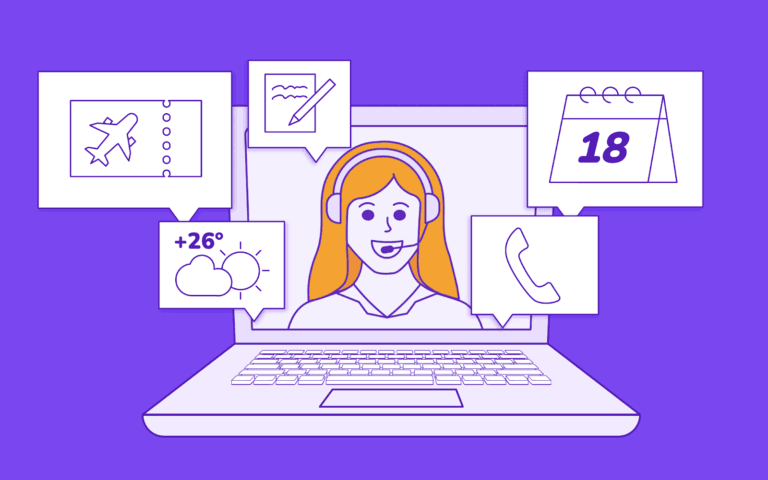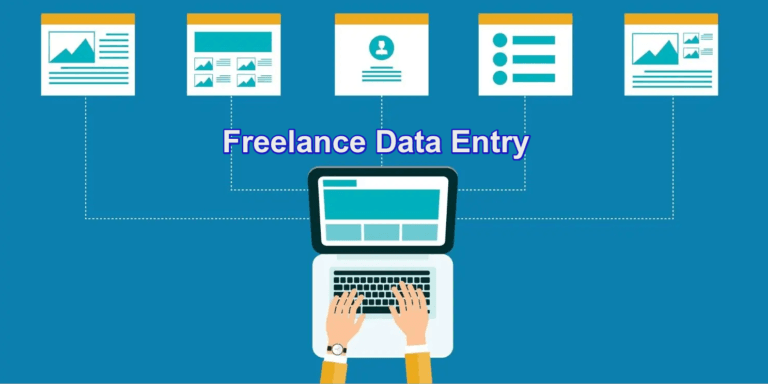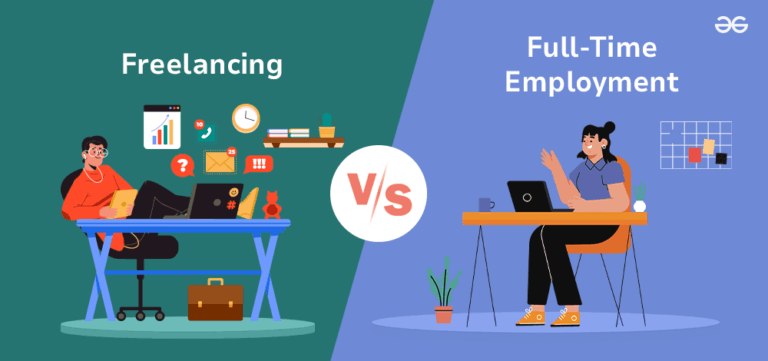Becoming a freelance graphic designer is a rewarding and rewarding career that offers freedom, to work on projects you care about, set your schedule and be your boss. This article focuses on the steps to becoming a freelance graphic designer, assuming you have some background in design. If you are not a designer yet, it will take more time to learn the trade and start a graphic design business.
Graphic designers are visual storytellers who combine words, pictures, and graphics to create various works such as logos, animations, posters, and product packaging. They are essential in marketing and advertising campaigns for brands. Communication designers create eye-catching designs that evoke strong customer feelings and reinforce brand messages. Owning a graphic design company can provide a sense of fulfillment and success, as every dollar made is made by one’s efforts and abilities. Some crucial considerations for solo graphic designers include balancing empowerment and fear.
What is a Graphic Design Freelancer?
Knowing exactly what a graphic designer does for a living is the first step towards becoming one. At Shillington, graphic design is the efficient use of visuals to convey a message. As a result, graphic designers are primarily visual communicators; they take information, which might originate from many different places, and transform it into a visual representation.

But what exactly are they producing visually? To put it briefly, a great deal. Many objects that we see and use daily are created by graphic designers, including packaging, books, magazines, websites, applications, and advertisements, as well as the way that businesses advertise themselves (a process known as branding).
What then does a freelance graphic designer do? Of course, the reason you came here was to learn how to work as a freelance graphic designer. Graphic designers can work as independent contractors, in-house for businesses, or as part of a design studio or agency. In the field of design, freelancers are the lone rangers; they operate alone, producing their work for customers of their own. You have the chance to genuinely make your mark on the graphic design profession by freelancing.
Understanding the Role of a Freelance Graphic Designer
On a project-by-project basis, a freelance graphic designer produces visual material for customers. This might involve creating visuals for social media, websites, logos, packaging, and ads, among other things. Freelancers are responsible for managing all parts of their business, from project management and client acquisition to billing and taxation, in contrast to in-house designers.

All in all, being a graphic design freelancer is an exciting, ever-changing career prospect. Are you still intrigued? Here are some tips on how to start a graphic design business on your own:
- Be a Creative Person: To become a freelance graphic designer, one must first become a creative person. This is crucial as the career requires constant creativity. Whether born with a creative mind or developed later in life, having a creative streak is essential for success. Whether you have a natural or developed talent, having a creative streak is the first step towards becoming a successful freelance graphic designer.
- Refine your Graphic Design Skills: To become a freelance graphic designer, one must refine their skills through either upskilling or learning from scratch. For existing designers, upskilling ensures they have the right knowledge for the job, including new tips and tricks. The graphic design industry is constantly evolving, so staying updated with trends and software is crucial. For beginners, learning everything from design theory to design history, the design process, and design programs is necessary. Whether upskilling or learning for the first time, the next step is to refine your skills and adapt to the ever-changing landscape of the graphic design industry.
- Enroll in a Graphic Design Course: Take a graphic design course to get the skills necessary to succeed as a freelance graphic designer. In just three full- or nine part-time months, this course will provide you with the skills and portfolio you need to succeed as a freelance graphic designer. This course, which takes an inventive approach, gives ambitious designers the know-how and abilities they need to get into the business right away. The easiest method to launch a new creative profession without needing to train for years is to do this.
- Learn the Right Tools for the Job: Freelance graphic designers require software like Adobe Creative Cloud (InDesign, Illustrator, Photoshop, and Figma) to succeed. Learning these tools through courses like Shillington’s self-teaching or online learning is crucial. Practice is key to mastering these programs, and with consistent practice, one can become a skilled freelance designer. Embracing these tools will lead to success in the design industry.
- Build Your Portfolio: A portfolio is crucial for becoming a graphic design freelancer, as it showcases your work and abilities, making it your first contact with potential clients. Employers want to see how you approach problems and how your design solves them. A condensed version of your portfolio should include both finished work and the process behind it. Seeking inspiration from the best portfolios in the design world can help build your portfolio.
- Find Yourself Some Worthy Clients: To become a graphic design freelancer, finding clients is crucial for income and portfolio building. While initial work may not align with your preferences, it’s part of the career growth process. Working with clients now allows you to be more specific and attract more in the future. Industry buzzwords like networking and social media can help you get work. Direct contact with potential clients can also be effective.
- Keep Working: Once you’ve established yourself as a graphic design freelancer, it’s crucial to continue working and growing in the industry. This involves constantly refining skills, learning, building portfolios, reviewing fees, and finding new clients. Embrace the exciting job and enjoy the dynamic industry, wishing you good luck in your freelance graphic design career.
What Are Different Types of Graphic Designers?
In-house work involves creating designs for a single firm or brand. Agency work involves working with a variety of customers and brands. Freelance work involves running one’s own design company.
In-House Graphic Designers
An established brand or business employs in-house graphic designers. To meet the different demands of an organization, they often possess a variety of general design talents. Their responsibilities will be diverse, ranging from creating fresh marketing strategies to gathering yearly reports. In-House Graphic Designers may be the only designer in a firm or they may collaborate with a team of other designers, depending on the size of the creative department.

An in-house graphic design department often has a more traditional work atmosphere, with regular work schedules and reliable income. In-house graphic designers must have a thorough awareness of the brand and company they represent, as well as the target market and style of the organization. In-house graphic Designers consider long-term design concepts and tactics since they actively contribute to the brand’s development. They keep developing and refining what they have already done.
Graphic designers employed by agencies
Agency graphic designers serve a variety of customers and companies. The demands of agencies’ external clients will differ as agencies are employed by other parties. Agency graphic designers typically work on brief projects with a focus on certain marketing. Agency graphic designers may be creating designs for many businesses at once, and their jobs are typically more fast-paced.

Within an agency, graphic designers typically work in teams of many. Everyone may have a distinct specialty or area of expertise. Excellent design is expected since agency graphic designers collaborate with highly talented and knowledgeable peers in the field. Working with agencies is a fantastic way to collaborate with other designers and gain insight into their design methodologies. This can be particularly useful for new Designers who are eager to learn from established Designers.
Freelance Graphic Designers
Self-employed freelance graphic designers oversee all facets of their company, from client management and billing to the actual design job. They work on a range of projects with several clientele. Entrepreneurial and self-driven, successful freelance graphic designers understand business.

Being a freelancer allows you a lot of flexibility. Graphic designers working for themselves are free to live and work anywhere they like. They can choose the type of job they take on, but when starting as a freelancer, building a solid clientele is crucial.
Freelance graphic designers have additional responsibilities outside of just designing graphics. These include managing administrative duties and promoting oneself. It is constantly necessary for freelancers to look for new prospects and clientele. They will occasionally face competition from other Designers for projects. The nature and quantity of labor can also have a significant impact on income.
How Do I Start a Career in Graphic Design?
To begin a career in graphic design, you should study design concepts, take a course in the field, practice using graphic design tools, work on projects, and develop your portfolio.
Learning about the concepts and principles of graphic design is the first and most evident step. You may do this by doing independent research or by signing up for a course in graphic design. You can gain the essential knowledge and experience working on various projects by enrolling in a graphic design school (a graphic design degree is virtually never required for a graphic design job).

Additionally, you’ll need to become proficient with basic graphic design programs like Photoshop, Illustrator, and InDesign. Every professional graphic designer uses these tools in their daily work, therefore learning about them and how they work is crucial.
Developing your portfolio is a must for working as a freelancer, at an agency, or in-house. To add real-world experience to your CV, take on personal projects or volunteer work. Make a compelling and eye-catching portfolio that highlights your abilities since prospective employers and clients will want to view samples of your work. You’ll find that your network is a terrific resource for graphic design possibilities.
How Much Does a Graphic Designer Get Paid?
Payscale estimates that the average yearly compensation for a graphic designer is $44,000 in Canada and $46,000 in the United States. The average annual salary for senior graphic designers in the US is $62,000.

Pay varies according to areas of specialty as well. The annual income of a motion designer is around $62,000, but that of a web designer might vary from $45,000 to $53,000. The average salary for UI and UX designers is $77,000 and $85,000, respectively.
A successful freelance graphic designer must possess business acumen, marketing prowess, and creative talents. You can draw in and keep clients while handling several tasks and staying motivated by developing your abilities, assembling a solid portfolio, and learning new things on an ongoing basis. You may create a successful freelancing job that combines financial security, creative flexibility, and professional progress with commitment and thoughtful planning. To succeed in the ever-changing field of freelance graphic design, never forget to remain flexible, look for inspiration, and make use of your network.








